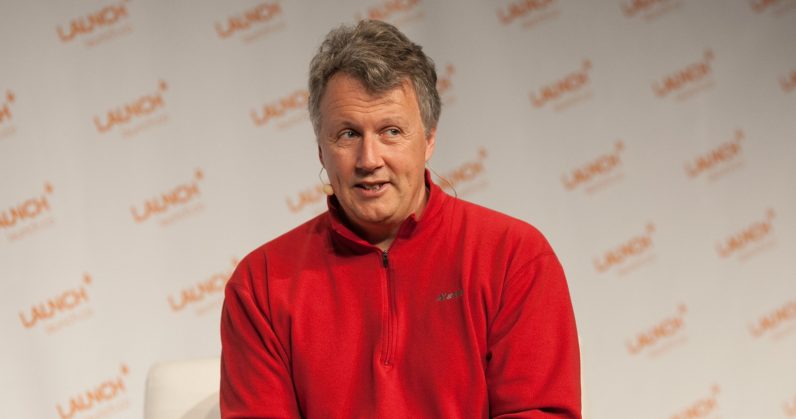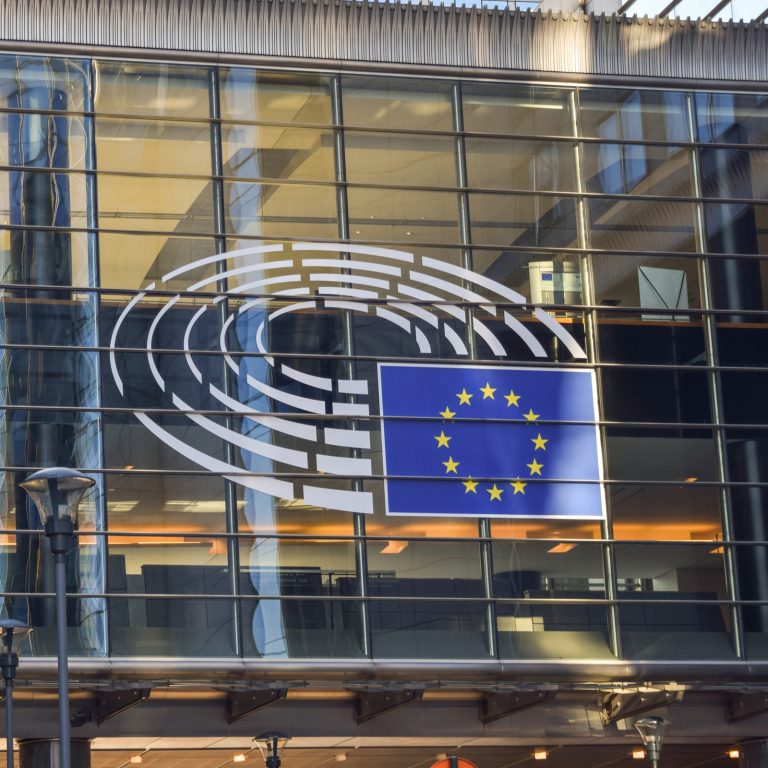![Crypto Exchanges With Lowest Fees in US, UK, EU [2022]](http://captainaltcoin.com/wp-content/uploads/2021/04/crypto.com-logo-1-1024x489.jpg)
2022-3-17 14:00 |
“There’s no such thing as a free lunch.” This isn’t just a popular truism. It’s a law of physics and nature. It’s especially true in economics, where the phrase is sometimes used to refer to opportunity cost. In crypto, you can still get a cheap lunch, and sometimes it’s pretty good, but there’s usually a hidden charge somewhere.
We’ll take a look at the least expensive places to trade crypto and ask, “What’s the catch?” I’ll explain the assorted ways that exchanges tax your trading. Some are up-front and transparent, but others are more subtle. Certain common practices are downright unethical, but forewarned is forearmed, so let’s do this.
How Exchanges Make Money Trading FeesAll the exchanges where I trade crypto levy trading fees. This is a percentage of the total trade value but is normally a fraction of a percent. I tend to buy and hold so I don’t pay trading fees regularly enough for them to be a concern.
Every ounce of profit is critical for day traders, and saving a few hundredths of a percent in fees will soon build up. It can be the difference between being in profit and being comfortably profitable. Binance, Kucoin, HitBTC, and all the most popular centralized exchanges charge trading fees.
Read also: Cheapest Way to Buy Bitcoin – Best Places To Buy Cheap Crypto
The SpreadExchanges that offer Zero Fees tend to have a super-wide spread. The spread is the difference between the Bid and Offer prices. It costs you more to buy an asset than you can sell it for, with the balance going straight into the pockets of the exchange. You must overcome this price gap before your trade is profitable, effectively starting your trade at a substantial loss.
In an ideal world with deep liquidity and high volume, a free market with genuine price discovery will reduce the spread to almost nothing. Platforms that make their cut through the spread are the most centralized exchanges, and often employ capricious market makers who will without warning, arbitrarily increase the spread. These Contract For Difference (CFD) exchanges are best avoided as we shall see later.
Automated Market Makers (AMMs)Much more wholesome and transparent are Decentralized Exchanges. The AMM was devised to obviate the need for a third-party market maker. A devilishly clever algorithm balances a liquidity pool containing both tokens of a trading pair. The trading fees are usually modest but the best part is that they are typically divided up between the liquidity providers. That’s people like me and you, that have staked their crypto in these liquidity pools.
Pay For Order FlowThis is one of the most insidious ways for a crypto trading platform to make money. Robinhood – I’m looking at you! Prior to starting the world’s biggest private Ponzi scheme, Berni Madoff was already up to no good. He has the dubious honor of coming up with Pay For Order Flow. This is where a service provider (market maker/hedge fund/liquidity provider) pays an exchange for routing trades their way. In any other walk of life, this would be known as a back-hander, bribe, kick-back, payola, or bung.
According to SEC rules, an exchange must route trades through the most efficient market. Clearly, if they’re being paid for these orders, there’s an obvious conflict of interest. Again, these platforms are best avoided as we shall see later.
Deposit / Withdrawal FeesThe most frustrating fees are the unexpected charges applied when you do anything else but trade. Yes, the spread may have been tight and the trading fees non-existent, but what if there’s a 25% withdrawal fee, plus a percentage of the total transaction? Arghh! All that time and effort spent angling a profit from day-trading can go up in smoke with admin fees buried in the small print.
Best comission-free/low-fee crypto exchangesThe cheapest fees will depend on the type of trader you are. Day traders might pay dozens of sets of fees per day, whereas a Hodler might rarely exchange her crypto. For the frequent trader, a wide spread could set them back a long way. For the investor, it doesn’t really matter. The fraction of a percent is not relevant over longer time scales.
Now we know what we’re looking for, let’s take a look at what’s on offer.
You will often read that brokers like Robinhood or eToro offer comission-free trading which is not entirely true. They just have a different model of charging you for their service – instead of taking a fixed fee percentage, they earn their money through spread (the difference between a buy and sell price). This is actually, in most cases, a more expensive way of trading crypto than on real exchanges (that trade with actual coins, not IOUs like brokers) that we list below. PhemexThe fee structure at Phemex is pretty standard for a crypto exchange. There are no deposit or withdrawal charges above the standard network fees for your chosen cryptocurrency. The trading fees are 0.025% for makers and 0.075% for takers, so although it’s not fee-fee trading, it’s pretty close to it. However, if you sign-up for Phemex premium account, you get a literal zero-fee trading status. Phemex premium costs from $0.19 to $0.33 per day, depending on the package you take (monthly, quarterly or yearly). You can also get a 30 day full premium trial if you follow Phemex on social media.
They have 5 billion per day in volume with over one million members.
Visit Phemex Now
BinanceOf course, no list of cheap crypto trading platforms can go without Binance. It is THE exchange that you have to be on. Not only for the very low fees of 0.1% per trade which are further discounted to 0.075% if you hold BNB and pay fees in BNB, but for all other industry-leading innovations and features that are being added on daily basis.
Binance offers most coins to trade, offers all types of trading platforms – spot, margin, futures, options, P2P etc. They also have a growing finance section of the site where you can earn crypto by lending it out, staking it or by providing liquidity on DeFi protocols.
Read more about Binance here.
Visit Binance Now
Crypto.comCrypto.com charges fees for credit card purchases of cryptocurrency. The cost is three to four percent depending on your country of residence. Withdrawing or depositing crypto incurs only the standard network gas fees. Trading your crypto on the exchange has a complicated fee structure which you can read all about here.
A ‘Taker’ is someone who makes a trade at the current market price. If you list your trade on the exchange in anticipation of a better price, you are a ‘Maker’ and will traditionally be charged less. The lower fees are awarded because Makers add liquidity to a market, helping reduce spreads and promoting more efficient price discovery. High liquidity is the holy grail for exchanges.
Your trading fees at Crypto.com also depend on your last 30 days’ trading volume. The more you trade, the lower your fees. You can also buy and stake CRO tokens to earn a discount on your fees. This is great for day traders, bot-fanatics, and high-frequency traders, but that’s the kind of exchange Crypto.com is. It offers all sorts of leveraged trade types, so low fees are important.
Visit Crypto.com Now
KucoinI had to laugh when I looked at the KuCoin trading fee schedule. There are 9 levels, the top-level charges Maker/Taker fees of -0.005% & 0.025%. That’s pretty good, and all you have to do to qualify is trade 3000 BTC each month. That’s only 150 million dollars, which works out at a paltry 5 million dollars per day. I mean, who doesn’t trade $35 million in the average week?
If like me you trade less than 50 BTC each month, you’ll pay the max fee of 0.1%, both as Maker and Taker. 50 BTC equates to 2.5 million bucks, so I have a long way to go before I can get a 10% reduction on my Maker fees. There’s a bonus offer for those that complete the KYC verification process. They earn a 20% discount on trading fees, which is better than a poke in the eye with a sharp stick!
Visit Kucoin Now
DigitexThey describe themselves as a “Zero fee Spot and Futures Exchange,” and the welcome page professes you can “BUY AND SELL CRYPTO WITH ZERO FEES.” You can read Digitex’s explanation of how their native exchange token DGTX generates value and obviates the requirement for trading fees. This sounds great, but what do we see in the small print?
It turns out there are “Low withdrawal fees, based on the Ethereum network fees.” If this means you only pay standard network fees, then fine. Of course, Ethereum fees can be excessive, so take care. I could not establish what these “low withdrawal fees” were. If it’s merely the Etheruem network fees, then why didn’t they boast about this? I felt like I was being frustrated when I tried to establish the actual withdrawal fees. But that’s not all.
The spread on Digitex’s BTC/USDT pair was $80 (1.6%), compared to Binance’s BTC/USDT spread of 1 cent (0.00002%). The Binance spread is effectively zero, but they charge me 0.075% for trades. From this, we conclude that Digitex’s zero-fee trading is TWENTY TIMES as expensive as Binance! No free lunch here!
AmplifyThere are no registration or monthly fees at Amplify, and I should hope not for a crypto exchange! The trading is commission free but as usual, if you hunt around a bit you’ll find some hidden charges. Crypto withdrawals cost between $1.50 and $5 on top of the standard network fees. Withdrawing Euros costs ˆ25 for each transaction, but there’s a glitch on the website where they quote US Dollar withdrawal fees. Hmmm.
Amplify don’t reveal their spreads, but I noticed that BTC was 200 bucks cheaper on Amplify than the quoted Coin Market Cap BTC spot price. Maybe there’s an arbitrage opportunity here?
ShapeshiftOn a DeFi exchange, you would only ever expect there to be standard network fees, plus a small percentage of each trade to reward miners or liquidity pool providers. Some of the fees are burned, but the catch is that you need to buy the native token to pay the fees. In Shapeshift’s case, it’s the FOX token.
They are up-front about the gas fees being pricey but point out that holding their FOX tokens earns US dollars which offsets these fees. Again, there’s no free lunch here. What is the opportunity cost of having value tied up in FOX tokens instead of being out there in a trade, making you profit?
LykkeI attempted to sign up to Lykke but the site was not working so I couldn’t see how wide the spreads on the exchange were. It worries me that they didn’t want to show their live trading page and left me wondering why they would want to hide it. Everything else is fee-free, including trades and transfers (other than standard network fees).
Working on the principle that there are no free lunches, I suspect the hidden trading page would reveal a wider than normal spread.
RobinhoodThe breakthrough for Robinhood was offering fractional share ownership. If you can’t afford a whole Tesla share at 700 bucks, you can buy 200 dollars worth. That’s pretty cool. But all crypto exchanges have been doing this since the very beginning. Robinhood offers zero-fee trading and the spreads are quite tight. So how do they make their money? What’s the catch?
Robinhood feeds trade data to their investors who then ‘Front Run’ the trades. Imagine knowing in real-time what millions of traders are doing. You can get in front of those trades and make a fortune. This is a blatant example of Bernie Madoff’s Pay for Order Flow in action. Remember, if the product is free, you are the product.
Worse than this, if their Pay For Order Flow customers are in trouble, Robinhood is prepared to shut down trading on the asset causing the problem. This happened with the Game Stop debacle when Citadel Capital was imperiled by market action. Robinhood simply closed the Game Stop market to traders.
Robbing the poor to give to the rich was not the business of the legendary archer and Sherwood forest dweller. This is why I’d never recommend getting involved with today’s Robinhood.
Thoughts and ConclusionThere are no exchanges that don’t charge something, somewhere, somehow. Exchanges are complicated, expensive difficult projects to manage, and nobody is doing this out of the goodness of their heart. This is the financial industry, after all. I recommend choosing the exchanges that are open and honest about their fees and spreads. Would also be careful to read the small print in the help section before transferring crypto or cash to any exchange.
I find the cheapest way of trading is by holding BNB on Binance exchange. I don’t begrudge them a tiny fraction of a percent in trading fees as the spreads are so fantastically tight and the liquidity is always deep. That’s more than worth the money to me.
The post Crypto Exchanges With Lowest Fees in US, UK, EU [2022] appeared first on CaptainAltcoin.
origin »Infinity Economics (XIN) íà Currencies.ru
|
|











